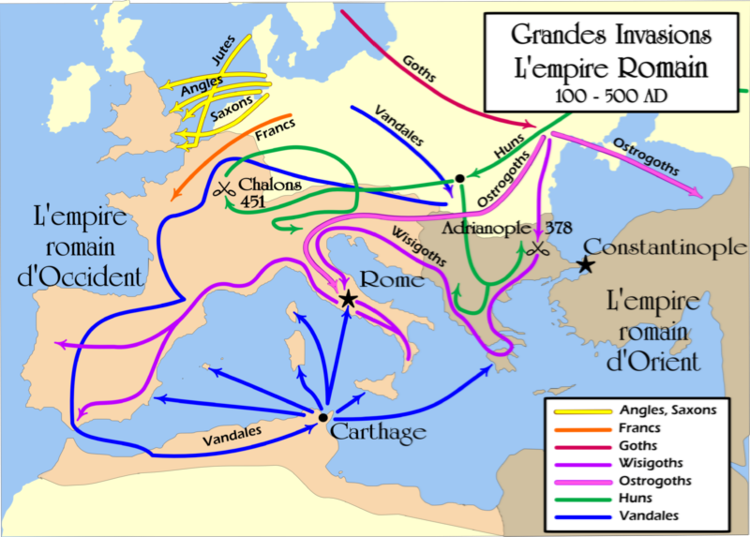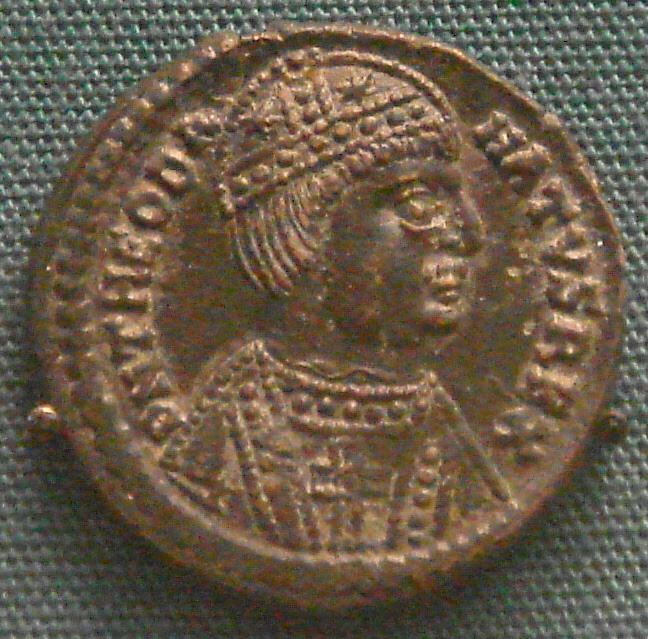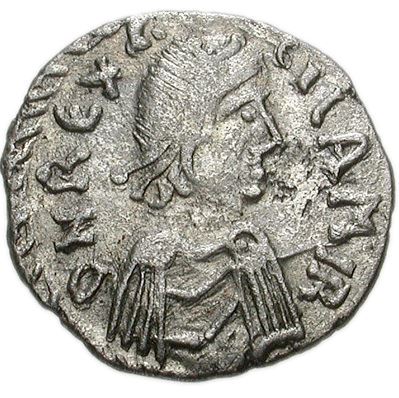The Migration Period was a period during the decline of the Roman Empire around the 4th to 6th centuries AD in which there were widespread migrations of peoples within or into Europe, mostly into Roman territory, notably the Germanic tribes and the Huns.
Many of the migrations were movements of Germanic, Hunnic, Slavic and other peoples into the territory of the then declining Roman Empire, with or without accompanying invasions or war.
Some of the migrating tribes - most notably the Vandals, the Ostrogoths, and the Lombards - began striking coins when they started to settle down in Imperial territory or established their own realms. These coins were, at least initially, imitations of existing Roman issues.
Many of the migrations were movements of Germanic, Hunnic, Slavic and other peoples into the territory of the then declining Roman Empire, with or without accompanying invasions or war.
Some of the migrating tribes - most notably the Vandals, the Ostrogoths, and the Lombards - began striking coins when they started to settle down in Imperial territory or established their own realms. These coins were, at least initially, imitations of existing Roman issues.

The Ostrogoths were the eastern branch of the Germanic people called the Goths. They traced their origins to the Greutungi – a branch of the Goths who had migrated southward from the Baltic Sea and established a kingdom north of the Black Sea, during the 3rd and 4th centuries.
They were subjugated by the Huns in 370 AD, and little is heard of the Ostrogoths for about 80 years, after wh...
They were subjugated by the Huns in 370 AD, and little is heard of the Ostrogoths for about 80 years, after wh...
The Vandals were a large East Germanic tribe or group of tribes which migrated from southern Scandinavia and settled in Silesia from around 120 BC. Expanding into Dacia during the Marcomannic Wars and to Pannonia during the Crisis of the Third Century, the Vandals were confined to Pannonia by the Goths around 330 AD, where they received permission to settle from Constantine the Great. Around 400, ...


